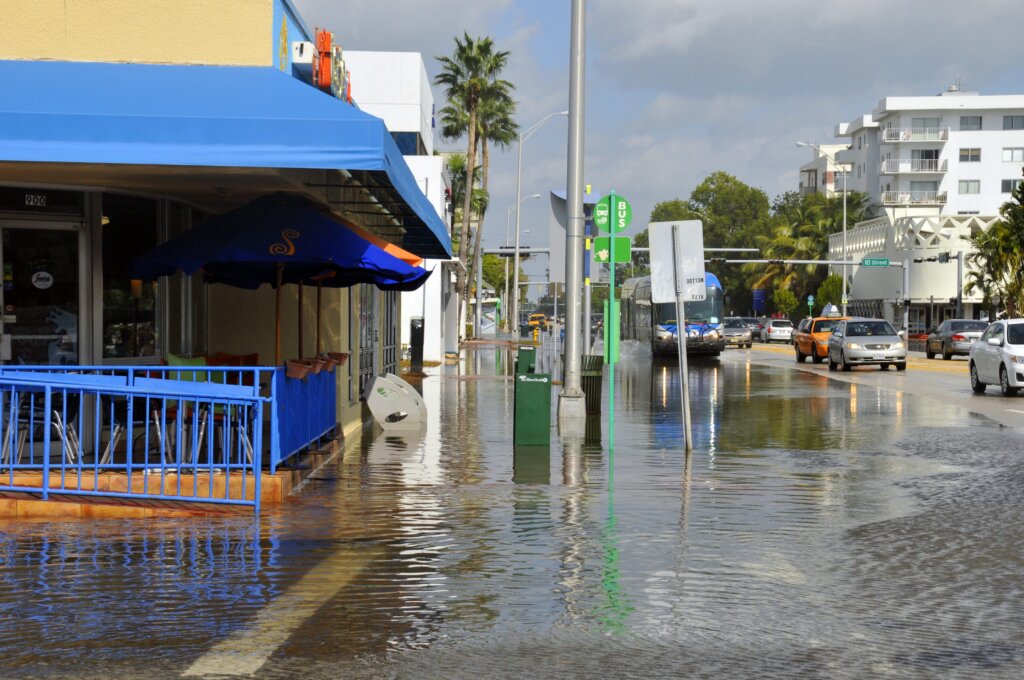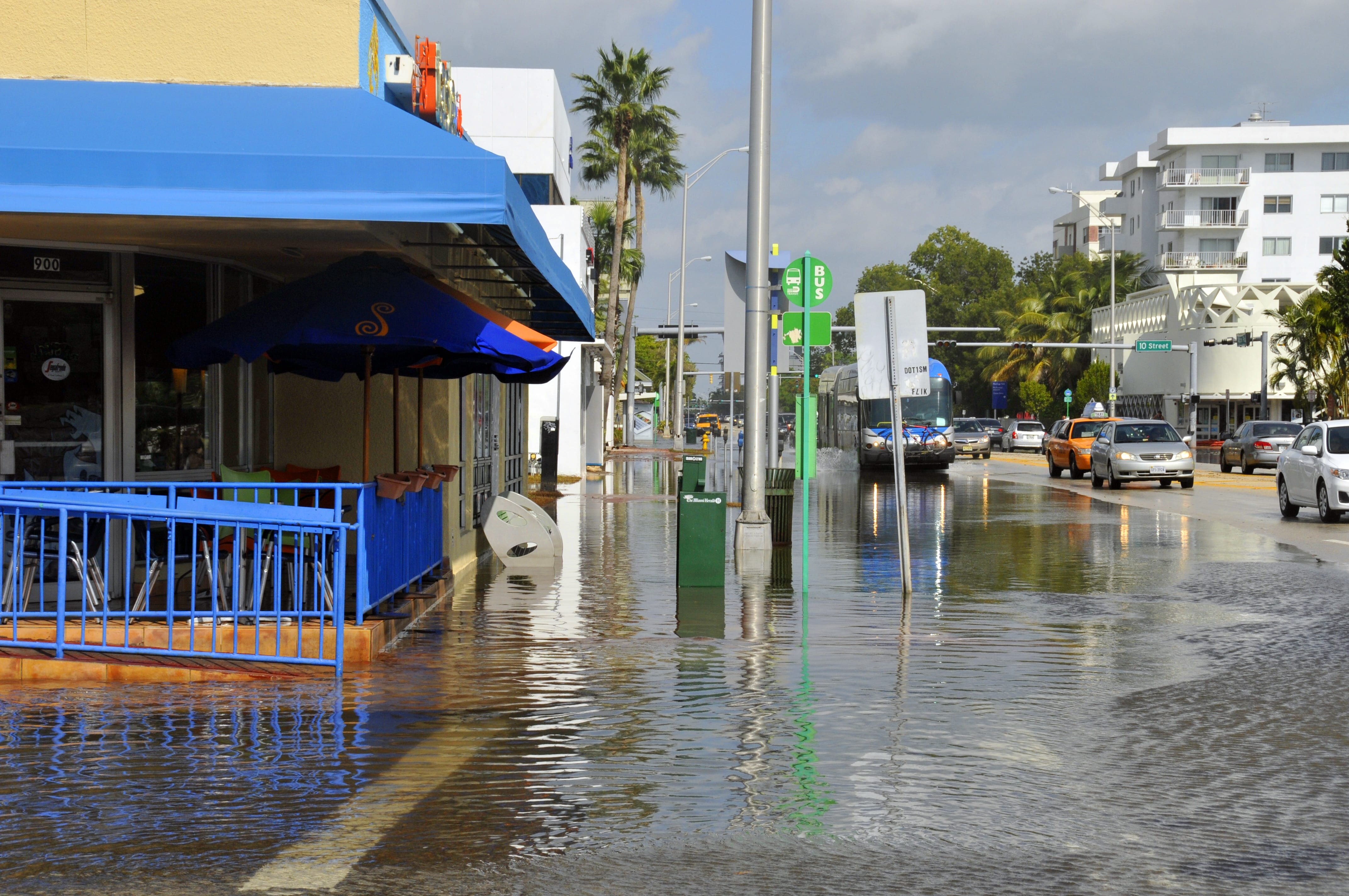
A recent Stanford University research showed that nearly 4 million single-family homes in the U.S. are in flood-prone areas.
What’s even more telling, the study indicated that these homes are collectively overvalued by almost $44 billion or, on average, $11,526 per house.
The puffed-up valuation of floodplain U.S. homes may be traceable to these reasons:
- Appraisers and mortgage lenders miss out on accounting for the vulnerability of these properties to rising sea levels.
- Flood insurance isn’t required for wealthier homebuyers who don’t need a mortgage.
- The U.S. Congress has a history of scaling back flood insurance rate increases.
Here’s a Closer Look at the Values of Floodplain Homes
The Stanford study reckons that if the cost of full insurance of floodplain homes against damage is factored in, their prices would be pushed down by 4.7–10.6%. For a $500,000 home, this would translate to as much as a $53,000 downward estimate.
The research also showed that single-family homes currently in a flood zone lose about 2% of their value. This lower valuation translates to $10,500 for a home in the $500,000 price range.
Homebuyers Ignore Flood Risks
The overvaluation of floodplain residential properties can also be traced to coastal home buyers that a Georgia State University survey shows “are ignoring rising flood risks, despite clear warnings.” (Those climate-change deniers who still got a loud voice to reckon with may have something to do with this survey result.)
This survey, which covered 680 licensed Florida Realtors, suggests that prospective homebuyers, on the whole, don’t take into account flood vulnerability or property elevation when looking for a home. The flood zone maps that concerned government agencies make available from this survey have had little or no effect on homebuyers’ purchase decisions.
Zoning Research Is a Must in Homebuyers’ Due Diligence
This finding of the Georgia State U survey alarmingly goes against conventional wisdom. Research on zoning, including flood risk areas, is among the vital steps in the buyers’ due diligence before a property purchase.
Smart home buyers can’t do without this diligent research step. Firstly, there is no federal requirement on home sellers’ disclosure of flood risk and damage. Second, 21 states across the U.S. don’t require home sellers to disclose information about their property’s flood risk.
These states also don’t require sellers to disclose any previous property damage to buyers. Significantly for homebuyers in New Jersey, the state is among those wherein sellers’ flood risk disclosure isn’t required.
FEMA Flood Hazard Area Maps
For the most part, it’s a “buyers beware” scenario when it comes to factoring in flood risk in a home purchase. Thankfully, the flood zone maps compiled by the Federal Emergency Management Agency (FEMA) are a lifesaver for homebuyers’ due diligence related to flooding.
It’s important to note that in FEMA’s book, there’s no such thing as a risk-free zone when it comes to flooding. The FEMA zone maps enable homebuyers to see the vulnerability to flooding of the property they plan to buy.
The high-risk zones are those areas with a 1% chance of flooding. This zone is also called the 100-year flood or base flood. Properties in areas under the 1% chance of flood carry a one-in-four probability of flooding within the timeframe of a 30-year mortgage.
Understanding FEMA’s Hazard Areas
These high-risk locations comprise the first of the two main types of flood zones that the FEMA has designated. Called Special Flood Hazard Areas (SFHAs), these zones are in the letters A or V, depending on the properties’ locations. Those homes listed in “A” are in inland areas, while those under “V” are in coastal areas.
The floodplain management regulations of the National Flood Insurance Program are enforced in these areas. Thus, aspiring buyers of these properties must budget for flood insurance.
Locations with the Least Flooding Risk
The Non-Special Flood Hazard Areas (NSFHA) cover the second type of the FEMA zones. These areas have no immediate flooding danger from heavy rains, tidal action, or overflowing bodies of water.
Locations under NSFHA are further classified into zones tagged as B, C, X Pre-, or Post-FIRM. Generally, these four zone indicators specify if a particular area has a low or moderate risk of flooding.
All things being equal, homebuyers are likely to favor properties under the flood zone X categories. FEMA has determined that the locations of these residences are outside the 500-year floodplain. In addition, flood control systems, like a dam or levee, protect their zones from 100-year flood risk.
Flooding Risk Is Widespread and Damage Costly
However, FEMA has observed that one in four flood insurance claims occur even in these low- to moderate-risk NSFHAs. Hence, the importance of a heads-up on flood risk and damage cannot be overemphasized.
According to a New York-based flood research non-profit First Street Foundation study, flooding risk hangs like a Damocles sword over approximately 4 million homes annually. The foundation estimated that flood brought damage, costing about $17 billion annually between 2010 and 2018.
For 2021, the foundation’s estimate further rose to $20 billion. The foundation predicted that flooding at-risk U.S. homes could bring damage costing $32 billion by 2051. It based this prediction on a widespread expectation of weather becoming more extreme and sea levels rising further in the years ahead.
Key Takeaways
Home sellers of properties in high-risk flood zones should not overvalue their listings. Property appraisers frequently miss out on accounting for the vulnerability of homes to rising sea levels brought about by climate change.
Consequently, home sellers face the prospect of their listings going stagnant and missing out on market opportunities. Homebuyers are increasingly becoming more vigilant about flooding risks, given the billion-dollar damage floods have wrought on U.S. residential properties in recent years.
Contact Halo Homebuyers for a fair valuation of a property you plan to sell. We are also a redevelopment company with the building expertise to mitigate potential flood damage and hence boost the value of your property. Call us at (908) 547-0404 or fill out our form so we can contact you.

